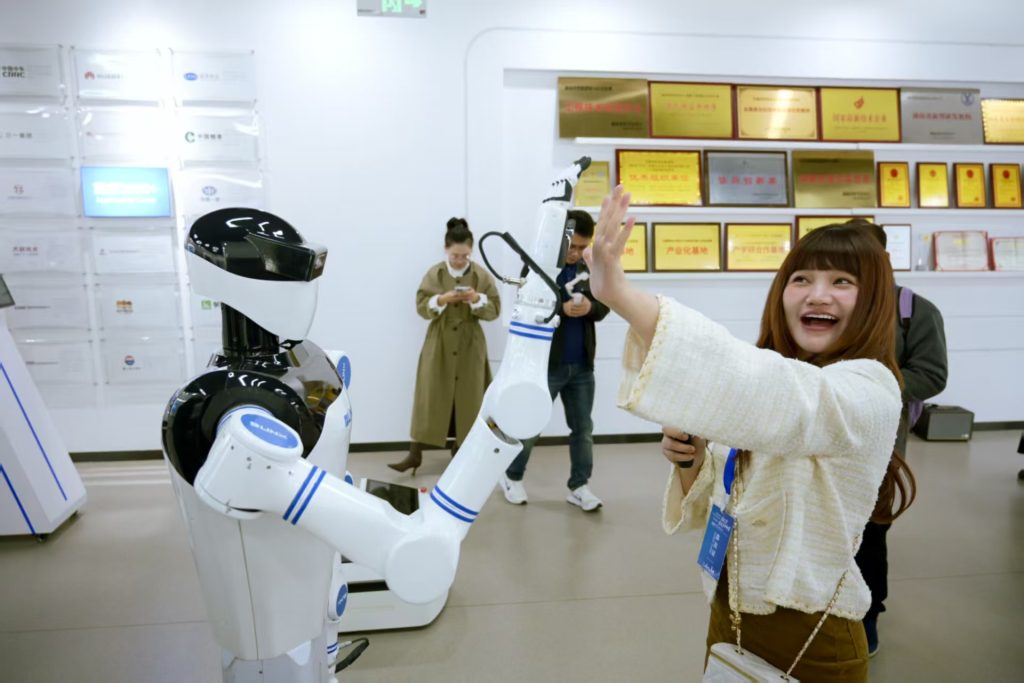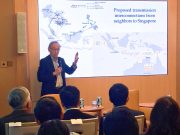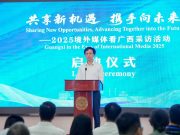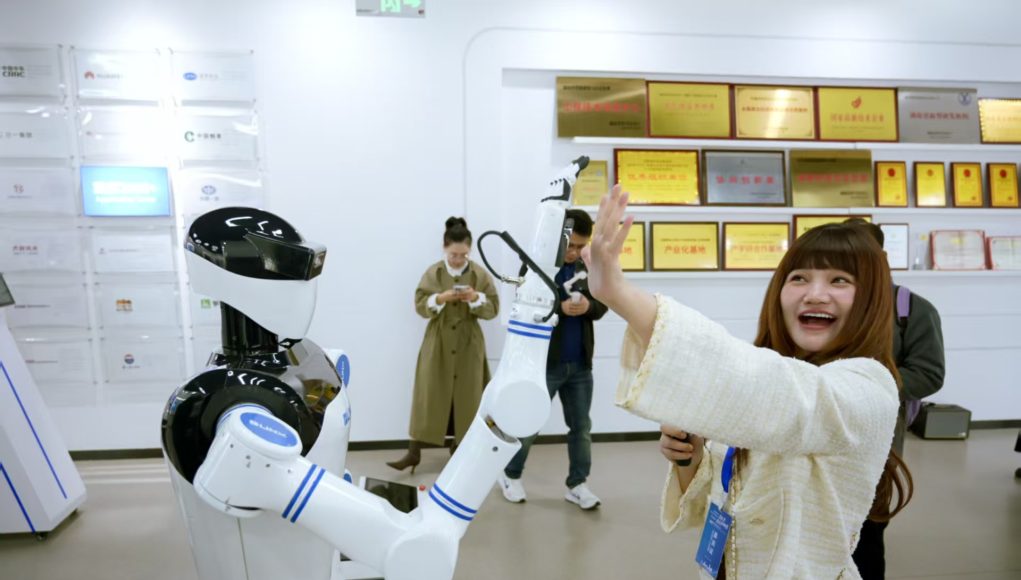(SINGAPORE 27.10.2025) Being a landlocked and almost water-ringed city in central China’s Hunan province, Changsha’s development in recent decades is a story of overcoming its terrain constraints and leveraging state policies.
Launched in 2015 with the central government’s endorsement, Xiangjiang (or Xiang River) New Area was created exactly for propelling Changsha beyond its geographical constraints. The New Area is now emerging as a hub for the artificial intelligence industry.
True to its name, it is situated on the banks of the Xiang River, which runs through Changsha. But instead of occupying the urbanized eastern shore, it sits on the western side, in the vicinity of the renowned Yuelu Mountain.
Changsha’s challenges are shared by the entire province of Hunan, which itself is surrounded by more geographically advantaged neighbors like Wuhan, Guangzhou, and Chongqing, not to mention the distant economic powerhouse, Shanghai.

Now, Hunan too is pivoting strategically to become a technology powerhouse, transforming from a transit point for goods and people into a destination for capital and talent, as well as a vital connection point in China and even the world.
As for Xiangjiang New Area, it is already accelerating the development of high-end industries. By 2026, it aims to cultivate and form a group of industrial clusters with core competitiveness and domestic influence in sectors such as construction machinery, new materials, energy storage materials, and new-generation electronic information.
It also aims to establish a first-class advanced manufacturing system in China by nurturing leading enterprises and tapping growth sectors like intelligent connected vehicles.
In terms of financial targets, the New Area wants to be host to enterprises each valued at over 500 billion yuan (about S$91.1 billion), three in the 100-billion-yuan range, and more than 15 valued above 10 billion yuan in 2026.
The New Area ultimately aims to establish itself as a model zone integrating “ecology, technology, and culture.” This vision entails enhancing cultural vibrancy in its zone, improving the urban and rural living environments, providing efficient and accessible public services, and strengthening employment support and entrepreneurial initiatives.
One prominent company that embodies the New Area’s development goals is Hunan Blinx Technology. As a private-owned high-tech enterprise, it is dedicated to the fields of intelligent robotics and AI, focusing on the research and development of core robotics technologies, intelligent bionic prosthetics, and intelligent sensing systems.
Ms. Pang Minli, a Blinx promotion executive, told Fortune Times that her company’s primary interest is edge-computing devices which operate independently of the cloud. “Blinx is adept at creating highly sensitive robotics that could instantly detect, for instance, dangerous situations,” she explained.
She offered two examples, one of which was a coxswain who missed the dangers when he made a particular steering manoeuvre, but he could be immediately alerted by an edge device’s algorithm.
“Another application is the spotting of pests in tobacco. These critters are often microscopic and undetectable by human inspection, but an edge device equipped with the appropriate algorithm can rapidly identify them,” she added.
The term “edge” is used because this technology processes data locally, avoiding the latency inherent in communicating with a distant cloud server.
While Chinese tech giants like Alibaba and Tencent, along with leading academic institutions, are major forces in edge computing research, Blinx has carved out a significant niche through its portfolio of unique, patent-protected products that are difficult to replicate.
For example, although Blinx did not invent what is known as the six-axis robot, it targets a specific segment of the market with a honed approach
So far Blinx has contributed to innovation in areas like control software that makes robots easier to program and use; precision and payload to improve their performance for specific tasks; and integration to enable them to work seamlessly with other factory automation systems.
According to Xiao Wei, R&D Manager at Blinx Tech, following the successful sales of their six-axis robots, the company recently launched a new six-axis collaborative robot.
This new model allows flexible integration of vision, voice, and multiple sensors, enabling easy adaptation to diverse application scenarios such as research training, industrial assembly, and smart production lines.
” This signifies that robots can deeply interpret ambiguous instructions and infer task intentions”, said Xiao.
It is reported that the company has developed 30 types of intelligent robots, including six-axis robots and seven-axis collaborative robots, with nearly 100 intellectual property applications and grants.
Blinx’s products are deployed in most parts of China, and are widely used in AI talent development programs at over 100 institutions.
Often called an articulated robot, a six-axis robot gets its name from its six movable joints. The structure allows the arm to bend and rotate with the flexibility of a human arm, enabling it to place its attached tool in any position and angle it needs to.
Overlooking the Xiang River from Orange Isle, a stone bust of the late Chinese leader Mao Zedong, a native of Hunan, bears silent witness to the rapid modernization of Changsha. While companies like Blinx drive the renewal of the region, the bust would stand as a cultural landmark that the pioneers of the Xiangjiang New Area had hoped for.





































